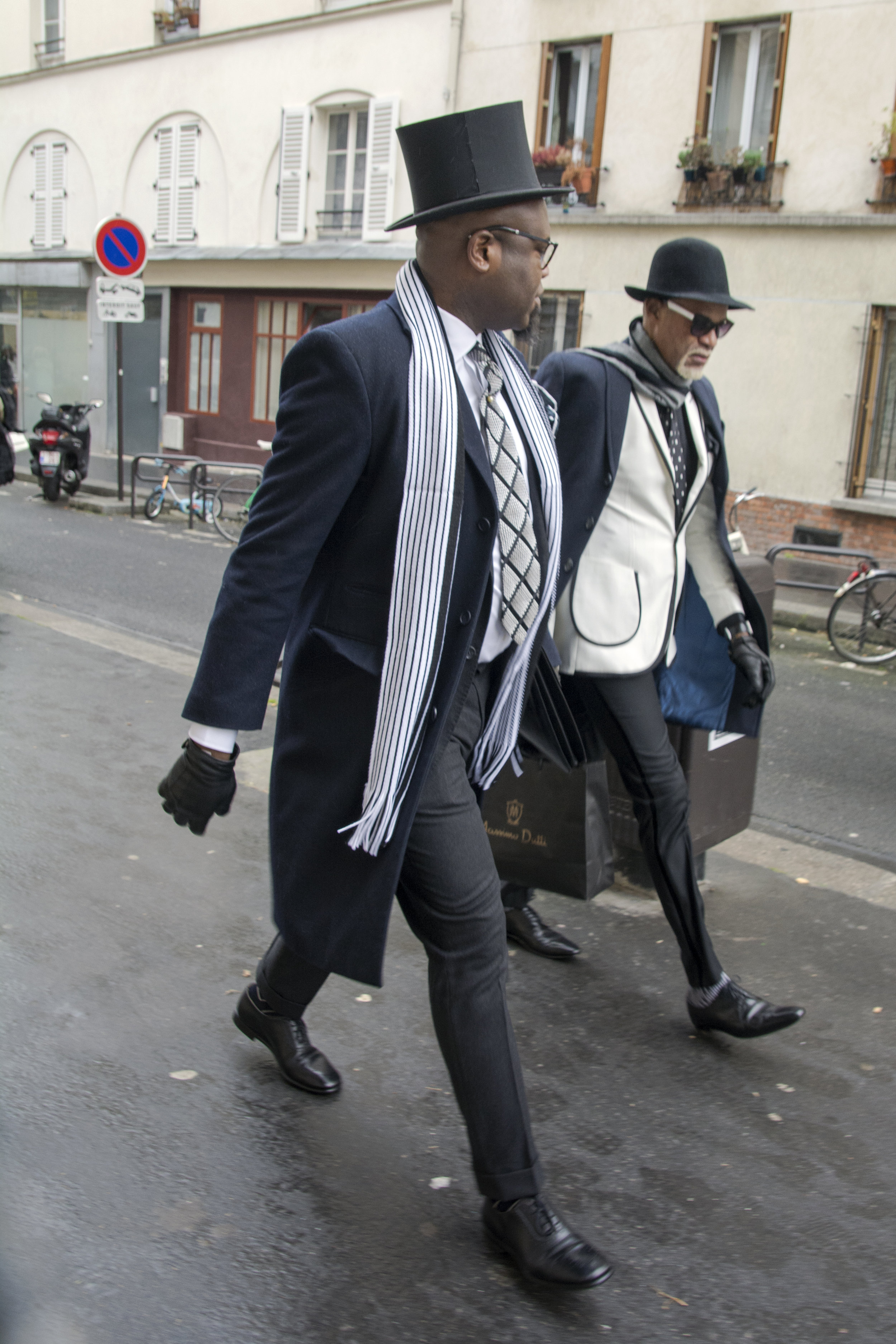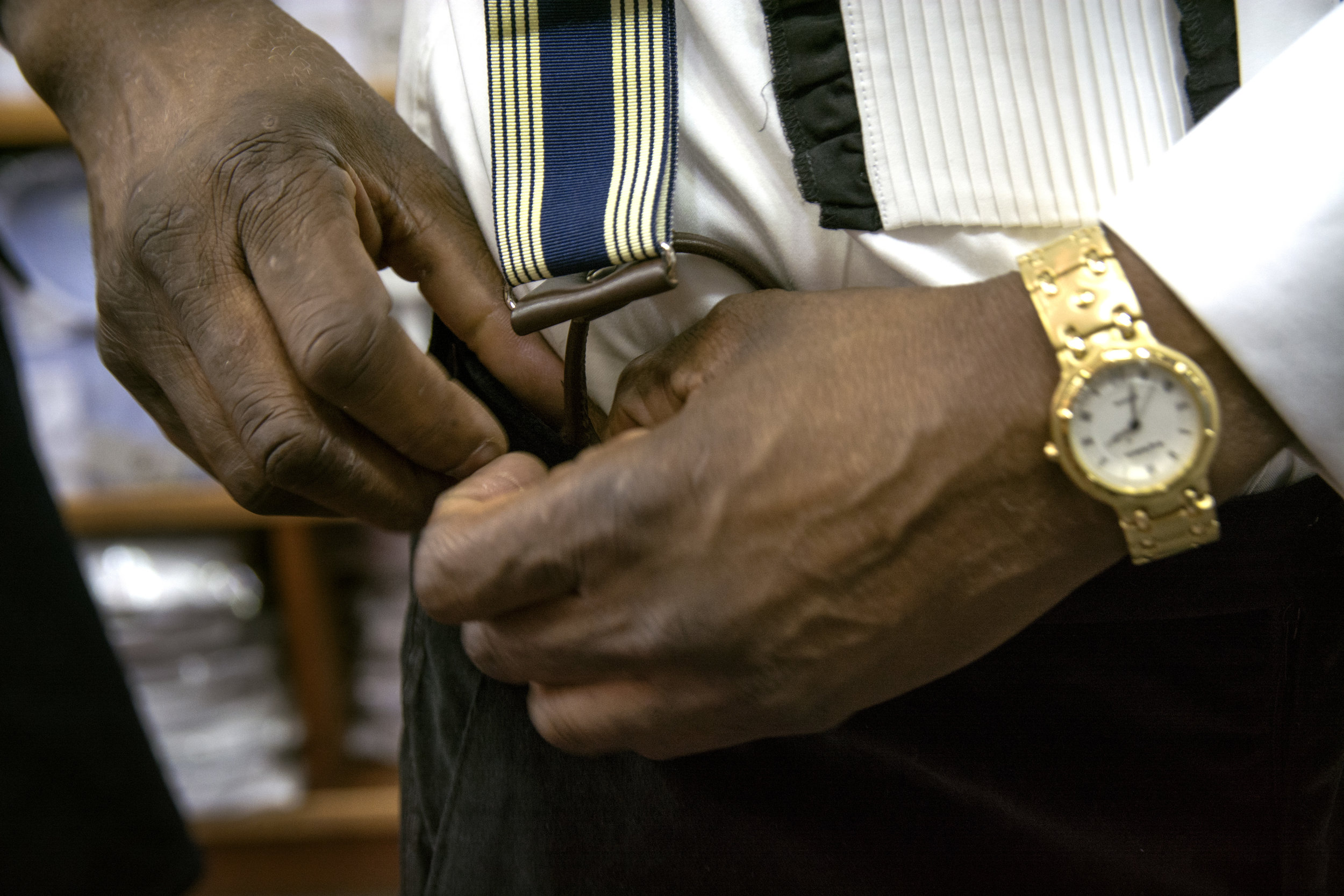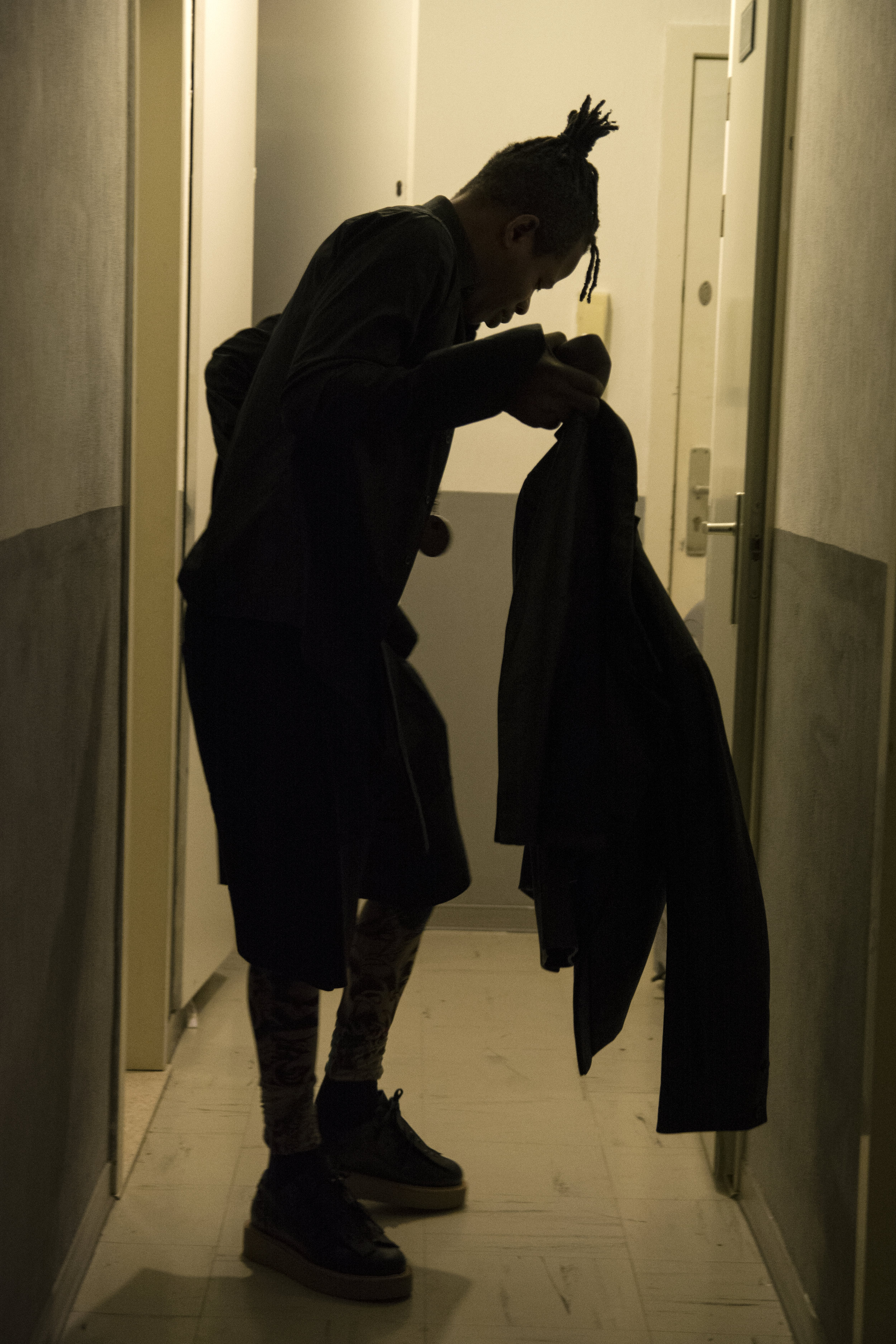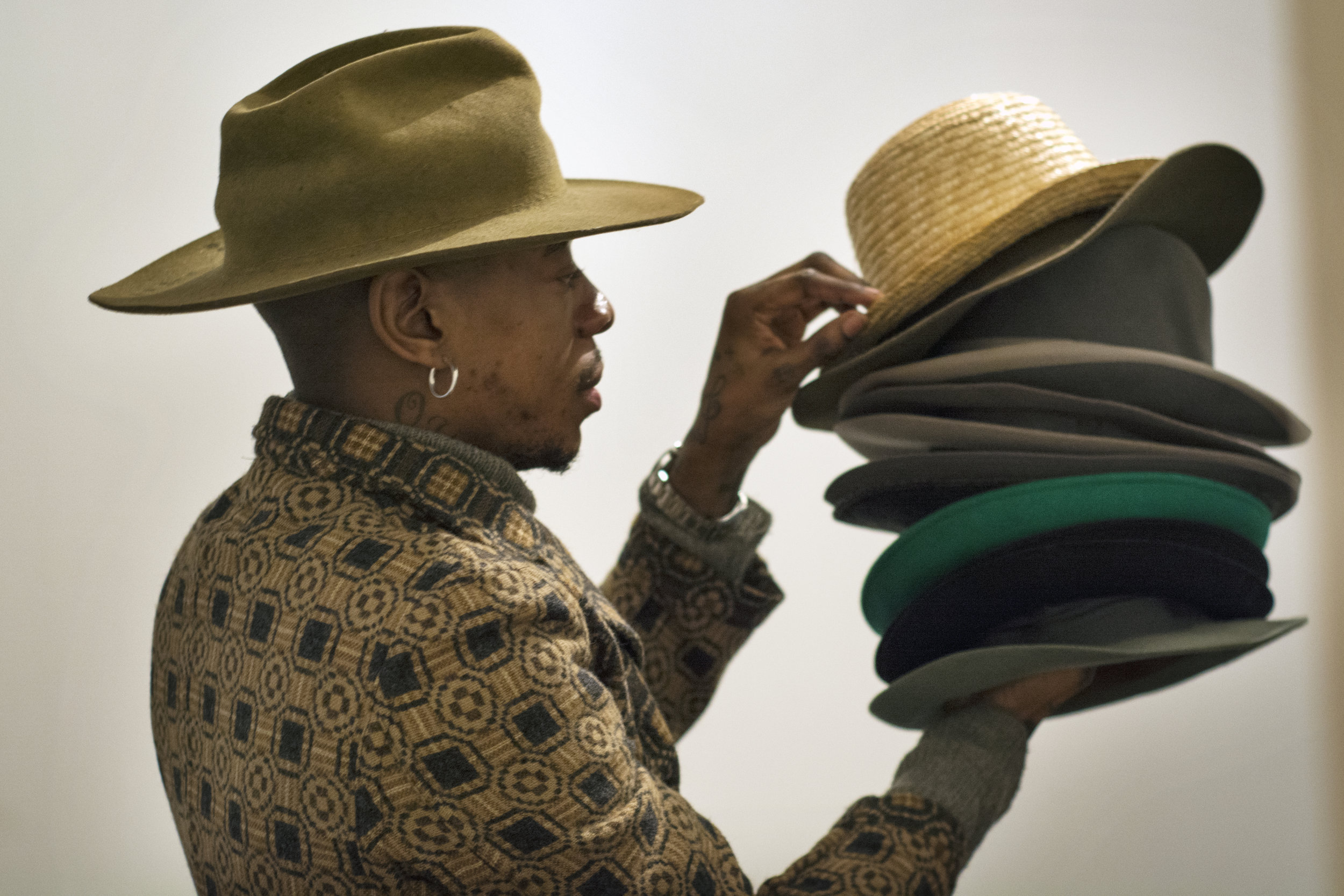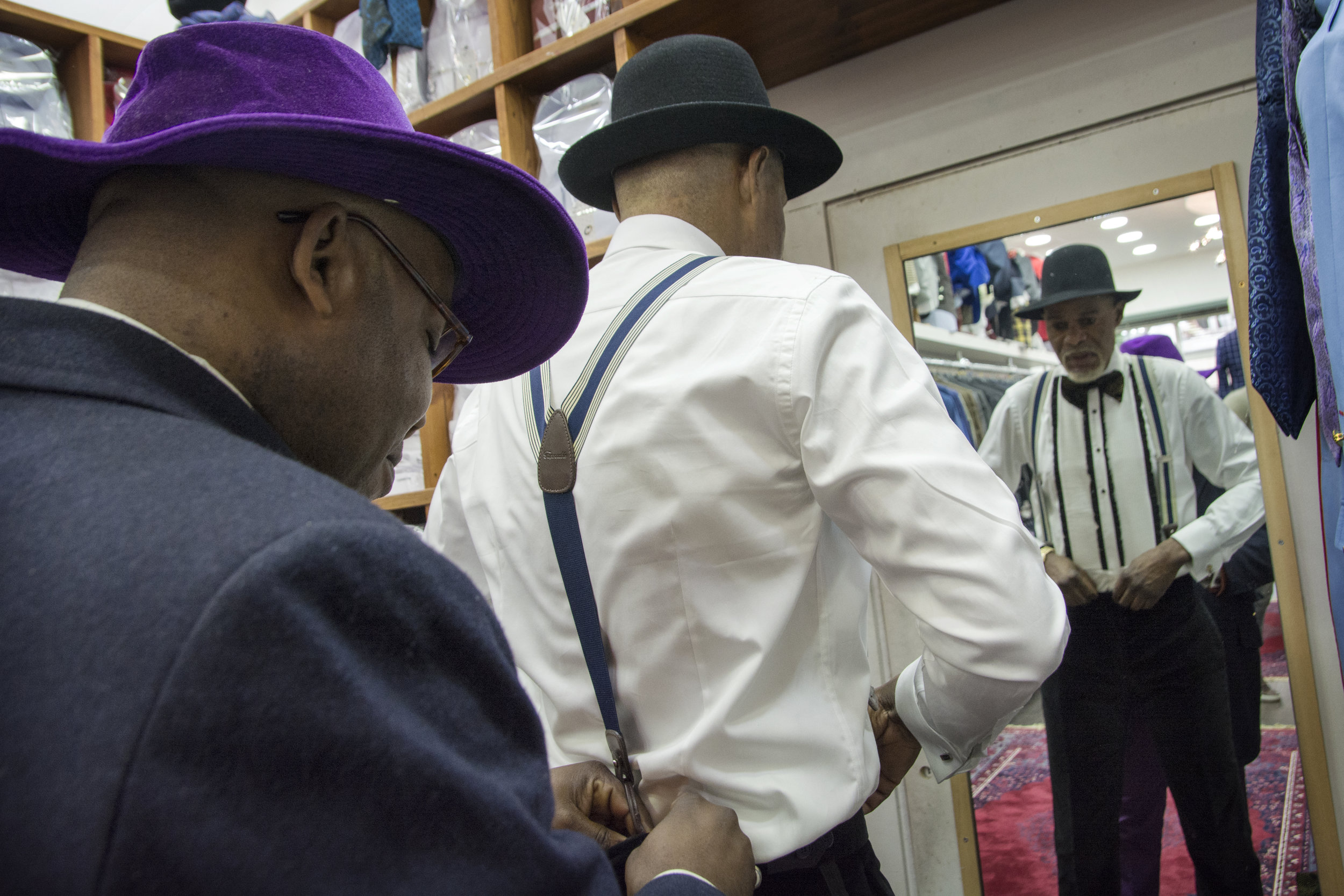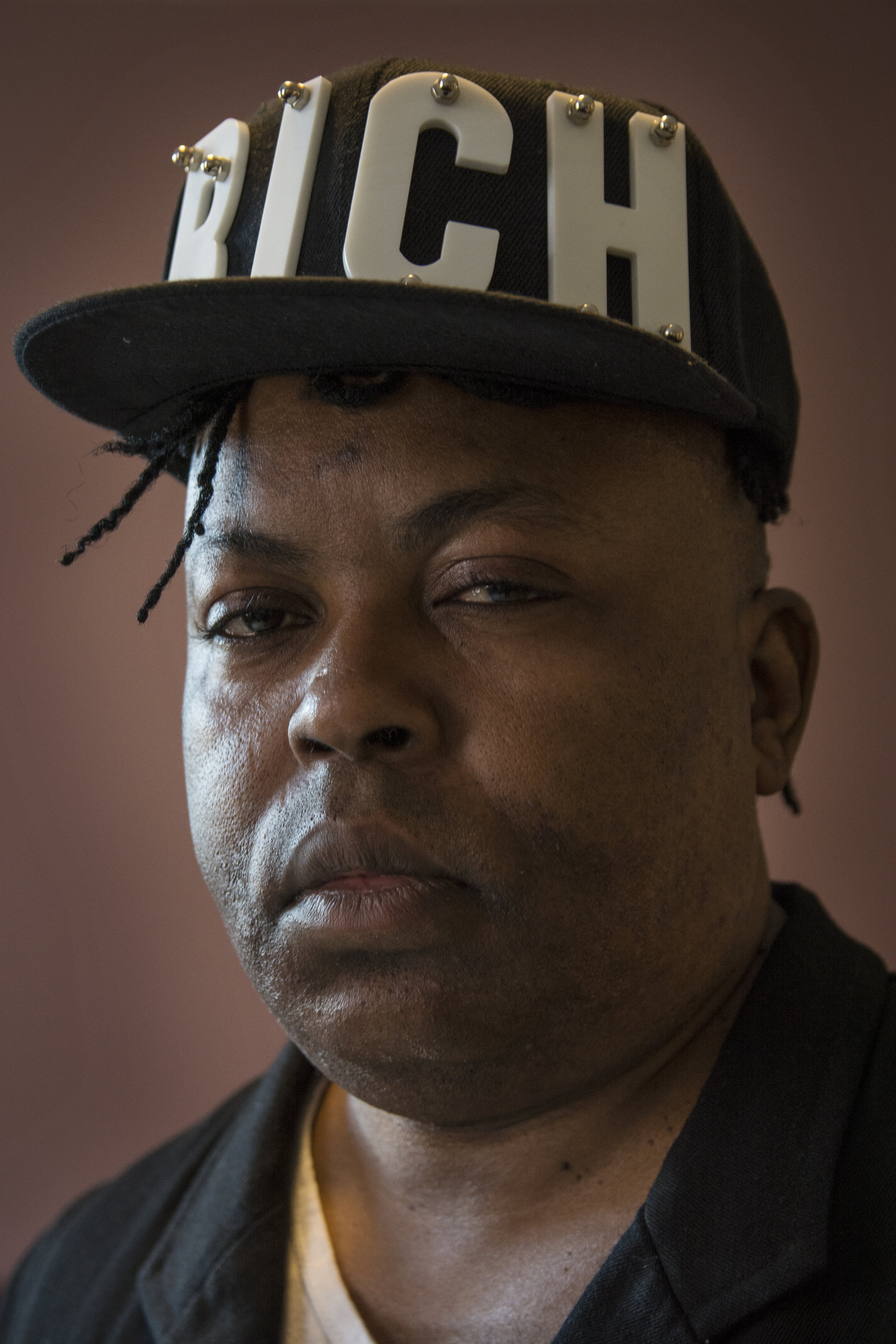la Sape
La Société des Ambianceurs et des Personnes Elégantes (the Society of Ambiance-Makers and Elegant People, commonly shortened to la Sape) is a social movement of well-dressed men that began in the two Congos in the 1980s. Sapeurs, members of la Sape, spend large sums of money on designer clothes, which they show off at social gatherings and use as a signifier of identity and community. Over the decades, la Sape has received more Western media attention, as it has increasingly become an international movement.
Sapeur communities have developed within the larger African diaspora in France and Belgium, the former colonizers of the Republic of the Congo (ROC) and the Democratic Republic of the Congo (DRC), respectively. The largest Sapeur communities are in Paris and Brussels, although smaller communities have popped up in other fashion capitals such as London.
French and Belgian colonizers brought European clothes to Central Africa in the late 19th and 20th centuries. La Sape grew out of cafes and clubs in Brazzaville, the capital of the Republic of the Congo, and spread to Kinshasa, the capital of the neighboring Democratic Republic of the Congo. Sapeurs spend large sums of money on designer clothes, which they show off at social gatherings and use as a signifier of identity and community. Post-independence, la Sape flourished through the support of musicians like Papa Wemba. Although, it was the young men who went to Paris in the 1980s who brought a love of fashion back to Africa.
Although Sapeurs are more visual than ever with widespread international media attention, la Sape's future is unclear, especially with the death of many of its leaders. With increased globalization, Congolese youth are largely turning to American fashion and music as inspirations. Now, many Sapeurs believe the movement will only continue if it becomes an integrated part of the Congos’ political and economic systems through broader recognition of its cultural and historical significance.
In more recent decades, one of the most impactful changes in la Sape has been the increased migration of Sapeurs, mostly to Europe, but to North America as well, which has created a bigger and more influential global Congolese diaspora Although older Sapeurs have preserved a more traditional understanding of the movement, younger members, particularly those born in Europe, have worked to expand la Sape and separate it from the negative stereotypes that highlight its darker side. As la Sape is increasingly represented in news media, advertisements, books, songs, and fashion collections, Sapeurs are using social media platforms to control how they as individuals and as a collective are represented.
Although Sapeurs are more visual than ever with increased attention in European and international media, the future of the movement is unclear, especially with the death of many of its leaders. Many older Sapeurs are confident in la Sape’s prospects, although this might be more a reflection of their own desire for self-preservation. With increased globalization and the Americanization of culture, Congolese youth are largely turning to the United States and American fashion and music as sources of inspiration. Consequently, many Sapeurs believe the movement will only continue if it becomes an integrated part of the Congos’ political and economic systems through wider recognition of its cultural and historical significance.
Sapeurs spend large sums of money on designer clothes, which they show off at social gatherings and use as a signifier of identity and community. Fashion continues to be a way to fulfill the dream of many Congolese to achieve the markers of a good life, which their countries do not allow them to pursue in a traditional manner due to continued political, social, and economic instability.
Sapeur communities have developed within the larger African diaspora in France and Belgium, the former colonizers of the Republic of the Congo (ROC) and the Democratic Republic of the Congo (DRC), respectively. A trip to Europe, particularly to Paris, is a necessary rite of passage to become a “vrai” (“true”) member of the movement. As is commonly said, “To die without having seen Paris is a sin.”





